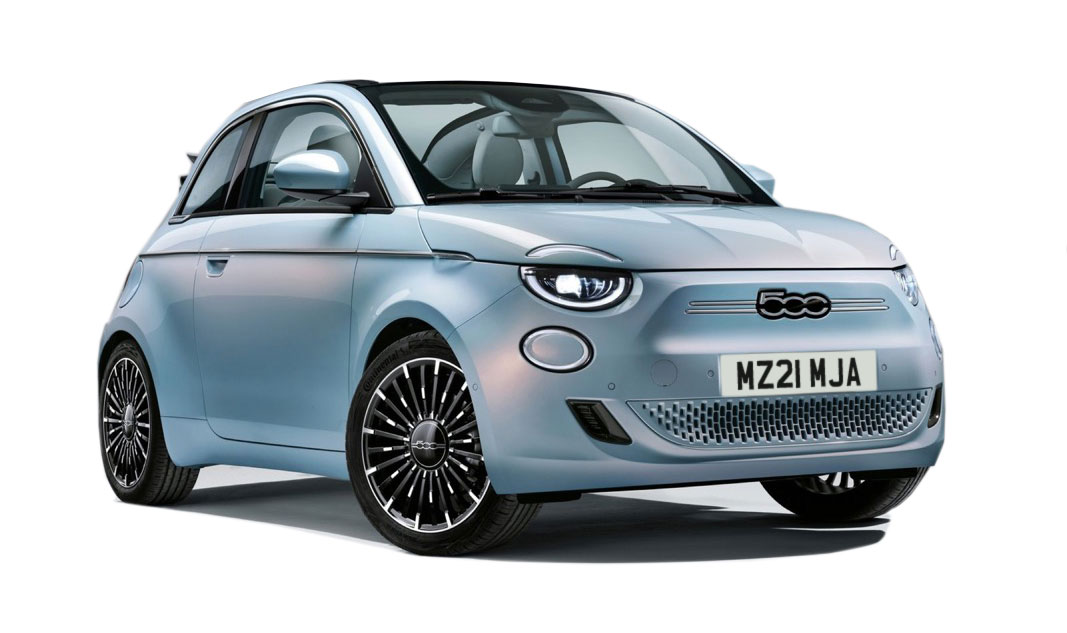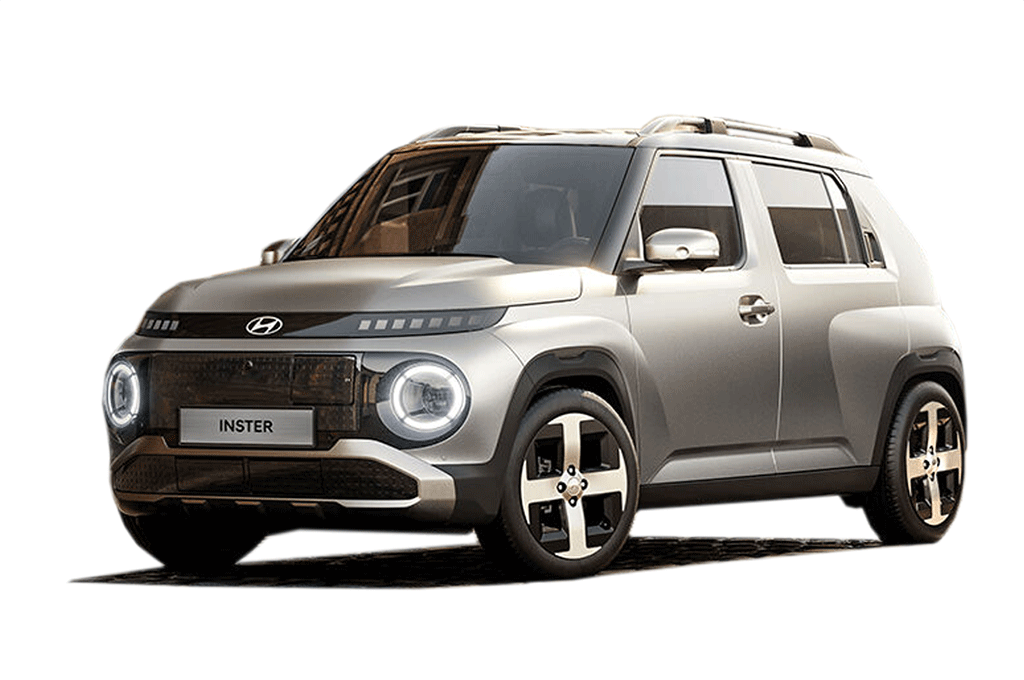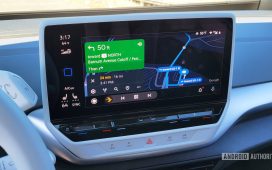Introduction and model history
The Renault 5 was one of the most successful cars in mainstream automotive history, selling more than 5.5m examples between 1972 and 1985. It’s a legend of affordable, no-nonsense motoring; no doubt about that.
Now, its modern reincarnation is here, complete with an all-electric powertrain, two battery options, an official WLTP range of between 194- and 255 miles, and possibly the best design since the modern Fiat 500.
The new Renault 5 E-Tech sits on a completely new platform, dubbed the ‘AmpR’ platform. It’s a compact 3,922mm long, but fairly wide at 2,020m wide including the mirrors (1,774mm without the mirrors), and is effectively a replacement for the Renault Zoe. So it’s great news that it’s also going to be usefully cheaper than the Zoe, with prices likely to start at £23,000 for the 194-mile ‘Urban’ battery and £27,000 for the 255-mile ‘Comfort’ battery.
Rivals include the electric Mini Cooper, Fiat 500e, Citroen e-C3, Hyundai Inster and Fiat Grande Panda, so the Renault isn’t without some very excellent alternatives in the affordable electric car stakes.
Range, battery and charging
There are two battery options; a 40kWh lithium-iron LFP pack that’s good for an official combined WLTP range of 194 miles, and a 52kWh lithium-ion NMC pack that’s pegged at 255 miles WLTP. You can check out the pros and cons of those two different battery chemistries, here, but safe to say that they’re both widely used in mainstream EVs, and are very safe and reliable.
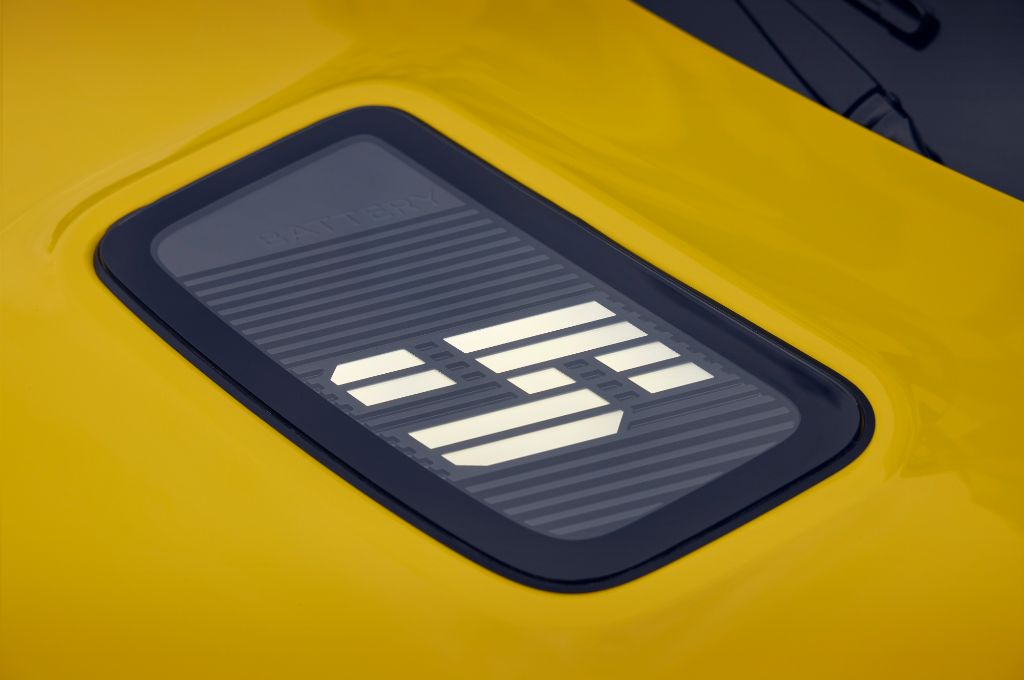
That’s a pretty reasonable claimed range, and is competitive with rivals like the Mini, Fiat and Citroen. But I drove the 52kWh ‘Comfort’ battery in warm conditions and an ordinary route along A-roads and a fair bit of town stuff in Denmark at the European Car of the Year long-list drives, and only saw a real-world range of 170- to 180-miles, which I find a bit disappointing. It’s not bad, but given the easygoing test drive I’d hoped that it’d be over 200 miles.
Nonetheless, most of the Renault’s rivals manage very similar real-world range – if not less – and this is more than enough for most drivers. We’ll have to wait and see how the it does in more varied conditions in the UK, and how that smaller LFP battery stacks up for real-world range. Mind you, the 5 gets a heat pump, which helps with winter efficiency and is often a very expensive option if it’s available at all on other small electric cars, so it may be pretty good for range in cold weather. I’ll report back!
That’s not the only good news, as you also get rapid charging of up to 100kW (80kW on the smaller battery car) so you’ll get a 10-80% charge in around 35 minutes. You can charge at up to 11kW from an AC charger, but most will rely on a standard 7kW home charger, which will fully charge the Renault 5 in around six-to-nine hours depending on the battery you’re filling with electricity. That raised ‘5’ on the bonnet also shows you the charge status, which I think is very cool.
In even better news, vehicle-to-load (V2L) is available on the 5, although you’ll have to pay for an adaptor. And as of later in 2025, it will also have vehicle-to-grid (V2G) charging, which means that you can actually power your house from the car’s battery – provided you have a home charger capable of bi-directional charging. Basically, this might be the best-looking back-up generator and mobile charging station, ever.
Don’t forget to check out the used electric Renaults for sale on Electrifying.com
Practicality and Boot Space
The Renault 5 is surprisingly practical for a small car. Sure, it doesn’t have the sort of ingenious packaging that sets the Hyundai Inster apart, but you’ll get a couple of average-sized adults in the back seats no problem. The rear doors could do with opening a touch wider – you may find that a bit annoying if you’ve got to lean in and strap young kids into their seats. But it’s not too bad, and the Renault 5 can seat five people at a squeeze (the Fiat 500 and Hyundai Inster can only seat four), and those rear seats split- and fold in a 60/40 split.
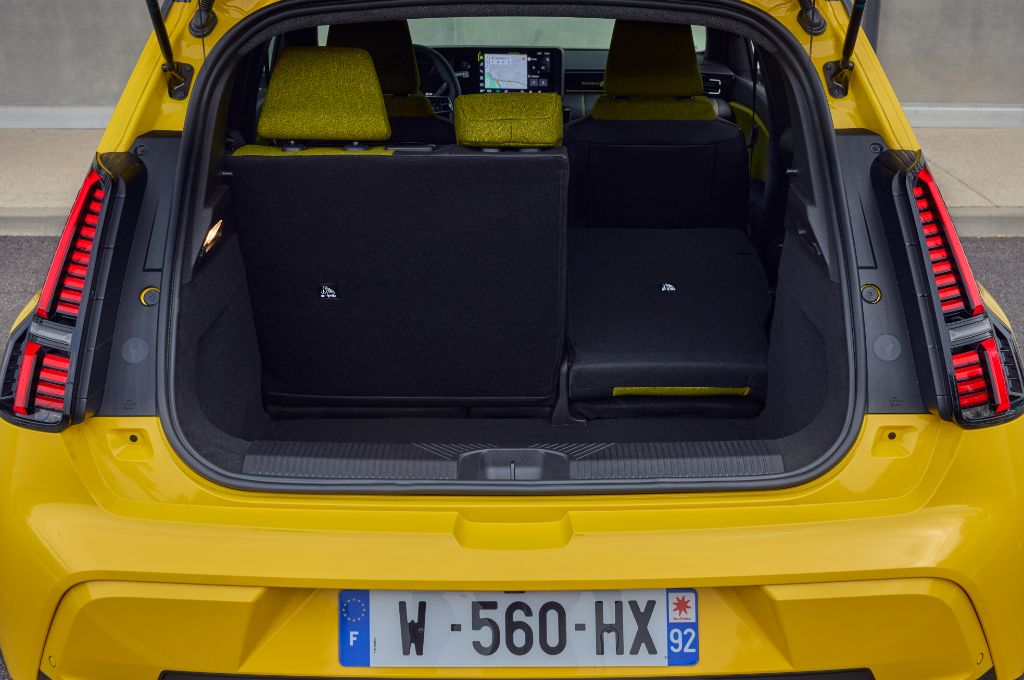
The boot is a good size, too. At 326-litres it’s a good depth, and also has underfloor cable storage, although the Renault 5 has no ‘frunk’ storage space under the bonnet.
It feels pretty spacious up front, too. Because it’s a reasonably wide car, I didn’t feel squeezed together with the front passenger that I was sharing with. The Renault 5 definitely nails that ‘big car in a small package’ feel. It can even tow a 500kg trailer, and while that’s only a light trailer it’s still properly useful for tip runs and the like – and no other small electric car is rated for towing, so bravo to Renault for giving the 5 a bit of towing ability.
Interior, Design/Styling and Technology
I think the 5 looks as cool inside, as it does outside. Our test car was the top-spec Iconic Five, which gets the matching colourful upholstery design; ‘heather yellow’ to match the Pop Yellow exterior colour. I’ve put some pics of the Renault 5 in a variety of different colours in the gallery, so do have a look, as you can get it in all sorts of different colours. I rather like the classy dark blue with gold accents, which harks back to the Renault 5 Gordini.
It’s a comfortable interior, too, with reasonable seat adjustment (done manually via spring-loaded levers) and electric lumbar adjustment, and rake- and reach steering wheel adjustment. Most drivers will be able to find a fairly natural position pretty easily, in the Renault. The only annoying thing is the stalk arrangement, where it’s too easy to swipe the windscreen wipers when you were actually going for reverse… I did it at least twice in the morning I spent with the 5.
Otherwise, the 10-1-inch colour touchscreen is great, with sharp graphics and quick responses, not to mention standard wireless Apple CarPlay and Android Auto. As with the Renault Megane and Scenic, you also get Google software – including Google maps – built into the car’s brain, which is really easy to use.
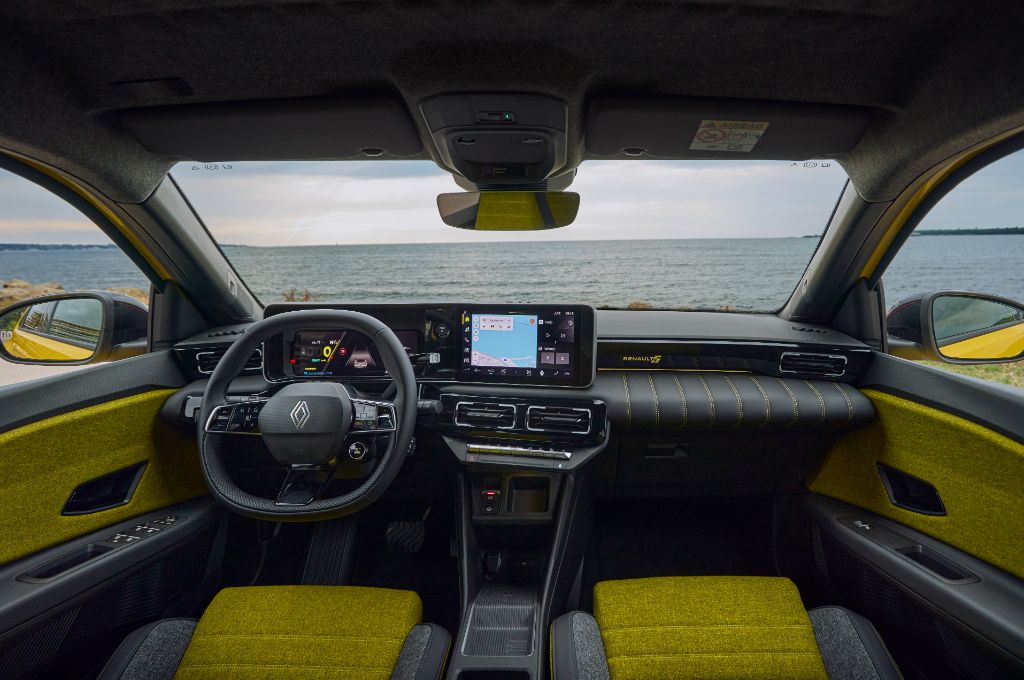
I also love the fact that there are hidden physical buttons on top of the screen’s housing, which is for your volume, and also a shortcut that brings up the option of turning off your screen at night. Not enough cars make it simple to dim- or turn off your car’s screen at night, but Renault has clearly thought about it very carefully. The air-con buttons are straightforward physical buttons, too, and there’s a digital driver’s readout for the speed and other important info.
Basically, Renault’s hit a sweet spot here for cool interior design but also plenty of very practical features and a layout that means you’re not overly dependent on the touchscreen to access all your settings and features.
Other tech stuff? Well, Renault has a new AI avatar assistant called ‘Reno’, who you can call on to give you information from the handbook, to adjust the temperature, and who will even use data from the car itself to make suggestions, such as winding your windows up if you’re heading into a busy tunnel with poor air quality. However, Reno wasn’t at home when we test drove the Renault 5; she’d been turned off as Renault was having issues with her being a bit too chatty…
We’ll report back on what it’s like when we’ve tried the 5 with Reno working. Mind you, it’s worth pointing out that you can turn ‘Reno’ off in the car’s settings, and save that in your ‘My Safety Settings’ that are then activated with a simple double-push of a button near the steering wheel. You can also activate your preferences regards lane-keep assist and speed-limit warning via the same button.
Motors, Performance and Handling
The Renault 5 is great to drive: Comfy, confident and fun. It’s no hot hatch, but that’s not its purpose, and you’ll be after the forthcoming Alpine A290 (aren’t we all?!) if it’s a performance hatch that you want.
You get a bit more power on the 52kWh car that we tested, so it’s good for a 0-62mph time of 8.0 seconds, which is more than enough to make it feel punchy around town and responsive enough even at motorway speeds. Eco mode does neuter the throttle response very noticeably and make it feel quite slow, so I didn’t love that, but it feels really peppy and fun in the standard Comfort mode.
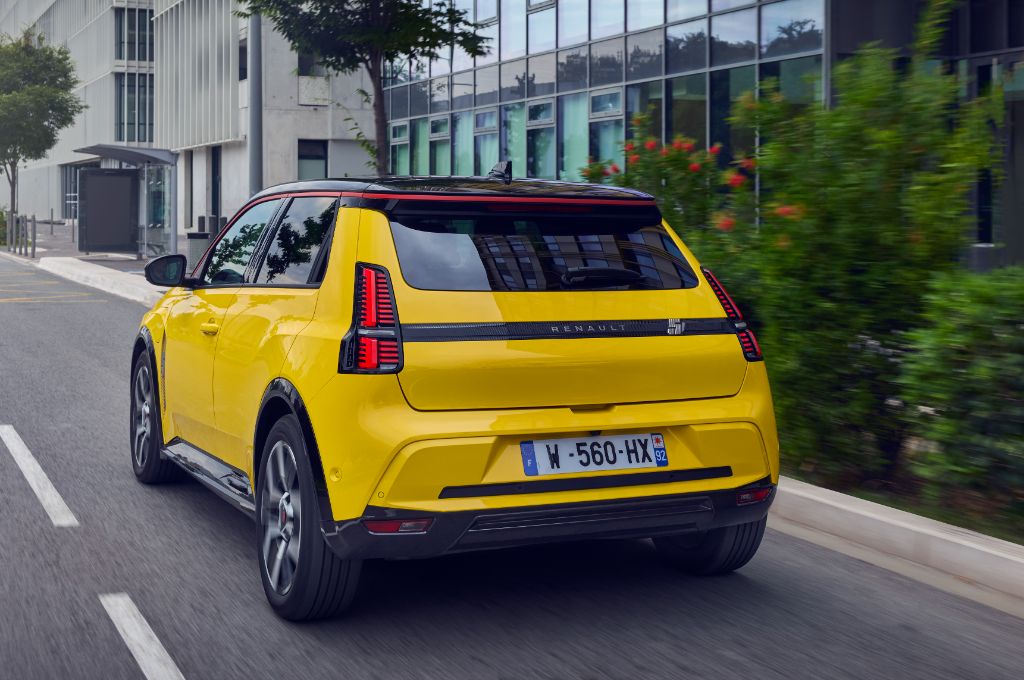
The quick steering helps with that, too, as it make the 5 feel very wieldy and direct as you steer it through town or any faster bends. It’s not as overtly sporting and sharp to drive as the Mini Cooper E and SE, but it’s exactly what a Renault 5 should be. The turning circle is only 10.3m, which means that it’ll manoeuvre in a smaller space than the Peugeot e-208, Jeep Avenger and electric Mini Cooper, although the even dinkier Fiat 500e has a slightly smaller turning circle than the Renault.
Running Costs and Pricing
Renault hasn’t confirmed UK pricing and specification, yet, but expect the entry-level 40kWh Renault 5 Evolution to cost around £23,000, while mid-spec Iconic will be the big-seller and is pegged to cost £25- or £27,000 depending on which battery you want. Top-spec Iconic Five will probably cost close to £29,000, and is only available with the 52kWh battery. We don’t have specifics, but we do know that every Renault 5 will get 18-inch alloy wheels, that touchscreen system we’ve already mentioned, and keyless entry, so it doesn’t sound like equipment is going to be bad. Plus, we know you can add an optional baguette holder, so the essentials are covered.
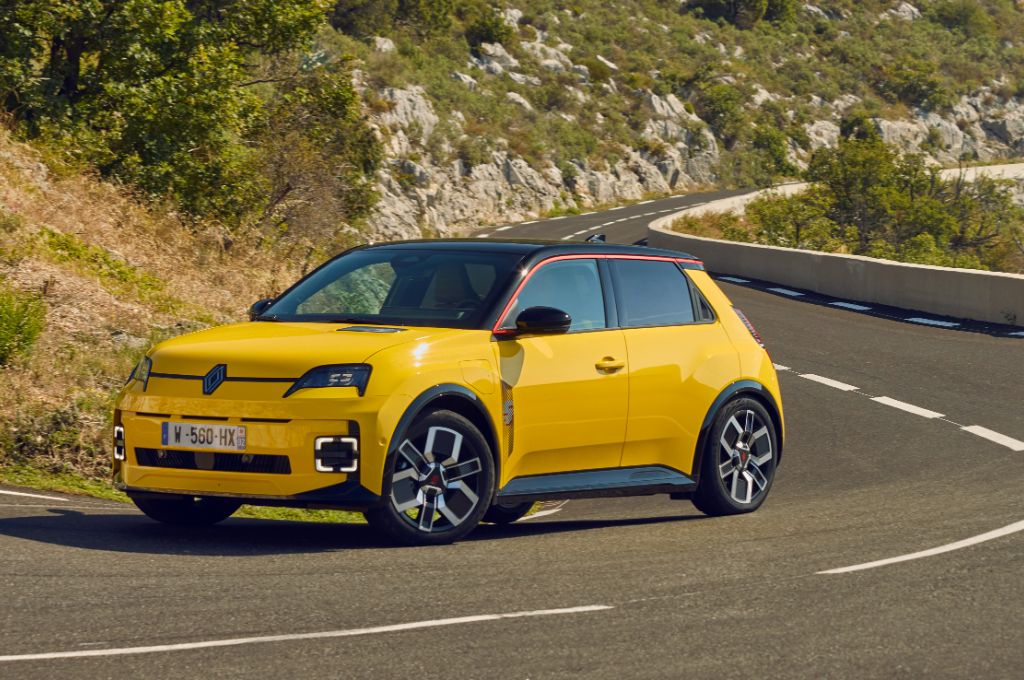
Verdict
I love the Renault 5. Because it’s not only a useful, affordable small electric car that’s fantastic value and perfectly judged in terms of the way it drives. It’s a sensible small electric car that’s attainable to a sector of the car market that’s been poorly served (if served at all) by electric cars until this year. And it’s an electric car that people want! Regardless of its sensible-ness, the 5 is an aspirational car. And to do that with such an affordable and well packaged little EV is a bit magic, really.

